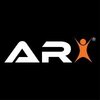


i
Johnson
Controls
Work with us
![]()
Filter interviews by
Johnson Controls Graduate Engineer Trainee (Get) Interview Questions and Answers
49 Interview questions
Transistor is a semiconductor device used for amplification and switching of electronic signals.
Transistor is made up of three layers of semiconductor material - P-type, N-type, and P-type.
It has three terminals - emitter, base, and collector.
Transistor can be used as an amplifier to increase the strength of a weak signal.
It can also be used as a switch to turn a circuit on or off.
Transistors are used in various e...
PID controller is a feedback control mechanism used in engineering to regulate a system's output.
PID stands for Proportional-Integral-Derivative
It continuously calculates an error value as the difference between a desired setpoint and a measured process variable
The controller then adjusts the output to minimize the error
Proportional control responds to the current error, integral control responds to the error over...
VFD stands for Variable Frequency Drive which is used to control the speed of an induction motor.
VFD is an electronic device that controls the frequency and voltage supplied to an induction motor.
It can be used to vary the speed of the motor as per the requirement.
VFDs are commonly used in industries to save energy and improve efficiency.
They can also be used to reduce mechanical stress on the motor and increase i...
Explanation of different terminals of BJT
BJT has three terminals: emitter, base, and collector
Emitter is heavily doped and has the highest concentration of charge carriers
Base is lightly doped and controls the flow of charge carriers from emitter to collector
Collector is moderately doped and collects the charge carriers from the base
The direction of current flow is from emitter to collector
Universal Gates are gates that can be used to implement any logic function. OR gate can be drawn from a Universal Gate.
Universal Gates include NAND and NOR gates
NAND and NOR gates can be used to implement any logic function
OR gate can be drawn from a NAND gate by connecting both inputs together
OR gate can be drawn from a NOR gate by connecting both inputs together and inverting the output
Counters are used to count the number of clock pulses and generate output signals. Shift registers are used to store and shift data.
Counters are sequential circuits that count the number of clock pulses and generate output signals.
They can be used in applications such as frequency dividers, event counters, and timers.
Shift registers are used to store and shift data in a serial manner.
They can be used in applicatio...
Johnson Counter is a digital circuit that counts in a cyclic pattern.
It is a type of shift register with feedback
It has a sequence of n bits that cycle through 2^n-1 states
It is used in digital clocks, frequency dividers, and memory address decoding
Example: 4-bit Johnson counter has a sequence of 0001, 0010, 0100, 1000, 0001, ...
It can be implemented using D flip-flops or JK flip-flops
Draw XOR gate truth table
XOR gate has two inputs and one output
Output is 1 only if inputs are different
Truth table: 0 XOR 0 = 0, 0 XOR 1 = 1, 1 XOR 0 = 1, 1 XOR 1 = 0
A PID controller is a feedback control loop that calculates an error value as the difference between a desired setpoint and a measured process variable.
The block diagram of a PID controller consists of three main components: the proportional, integral, and derivative terms.
The proportional term produces an output that is proportional to the error signal.
The integral term produces an output that is proportional to ...
8085 has 5 interrupts. TRAP, RST 7.5, RST 6.5, RST 5.5, INTR
8085 has 5 interrupts: TRAP, RST 7.5, RST 6.5, RST 5.5, INTR
TRAP is a non-maskable interrupt
RST 7.5, RST 6.5, and RST 5.5 are maskable interrupts
INTR is a maskable interrupt and can be enabled or disabled by setting the interrupt enable flip-flop
Interrupts are used to handle external events and improve the efficiency of the system
Johnson Controls Graduate Engineer Trainee (Get) Interview Experiences
17 interviews found
I applied via LinkedIn and was interviewed in Sep 2024. There were 2 interview rounds.
All questions are good along with tricky
(2 Questions)
- Q1. What are your final year projects
- Ans.
My final year project is a mobile application for tracking and managing personal finances.
Developing a user-friendly interface for inputting expenses and income
Implementing data visualization tools to track spending habits
Incorporating budgeting features to help users manage their finances effectively
- Q2. Introduce yourself
Interview Preparation Tips
I applied via Campus Placement and was interviewed in Oct 2022. There were 3 interview rounds.

Before apptitude round you will asked to select your stream, so as I'm from ECE I've selected ECE. So questions will be related to that only. In 60 min there were 75 MCQ questions with very bad website UI, So don't get shocked if you see no line breaks in code.
Question are from these domain:
- Microprocessor/Microcontroller (15 questions)
- Digital Electronics (10 questions)
- Analog electronic and Network Theory (10 questions)
- OOPs and psuedocode (15 questions)
- General Apptitude and Logical reasoning (15 questions)
- other basic ECE and CSE questions ( 10 questions)
Out of 70 students they selected only 6 from our college. Try to attempt more than 65 questions to get selected in this round. Fortunately I was selected in apptitude round.
(18 Questions)
- Q1. So before the technical Round they will have 1 hr pre placement talks. After that individual interview will start. If You're from ECE you will strictly be interviewed from ECE subjects only. Partially ther...
- Q2. Different between latches and flip flop
- Q3. Draw Jhonson Counter and explain its working?
- Ans.
Johnson Counter is a digital circuit that counts in a cyclic pattern.
It is a type of shift register with feedback
It has a sequence of n bits that cycle through 2^n-1 states
It is used in digital clocks, frequency dividers, and memory address decoding
Example: 4-bit Johnson counter has a sequence of 0001, 0010, 0100, 1000, 0001, ...
It can be implemented using D flip-flops or JK flip-flops
- Q4. What is the use of counter and How it is different from Shift registers.
- Ans.
Counters are used to count the number of clock pulses and generate output signals. Shift registers are used to store and shift data.
Counters are sequential circuits that count the number of clock pulses and generate output signals.
They can be used in applications such as frequency dividers, event counters, and timers.
Shift registers are used to store and shift data in a serial manner.
They can be used in applications su...
- Q5. Draw XOR gate write truth table
- Q6. What are Universal Gates and draw OR gate from one Universal Gate?
- Q7. Draw block diagram of PID controller
- Q8. Find equivalent resistance of the given circuit
- Ans.
Find equivalent resistance of the given circuit
Identify series and parallel connections
Use Ohm's law to calculate individual resistances
Combine resistances using series and parallel rules
Final answer should be in Ohms
- Q9. Why 8085 is called 8 bit processor
- Q10. No of intrupts in 8085. Explain all
- Ans.
8085 has 5 interrupts. TRAP, RST 7.5, RST 6.5, RST 5.5, INTR
8085 has 5 interrupts: TRAP, RST 7.5, RST 6.5, RST 5.5, INTR
TRAP is a non-maskable interrupt
RST 7.5, RST 6.5, and RST 5.5 are maskable interrupts
INTR is a maskable interrupt and can be enabled or disabled by setting the interrupt enable flip-flop
Interrupts are used to handle external events and improve the efficiency of the system
- Q11. Difference between Microprocessor and microcontroller
- Ans.
Microprocessor is a single chip CPU while microcontroller is a complete computer on a chip.
Microprocessor is used in general purpose computing while microcontroller is used in embedded systems.
Microprocessor has limited on-chip peripherals while microcontroller has on-chip peripherals like timers, ADC, etc.
Microprocessor requires external memory and peripherals while microcontroller has them on-chip.
Examples of micropr...
- Q12. Different flags in 8086 and its high and low condition
- Ans.
Flags in 8086 and their high and low conditions
8086 has 9 flags: Carry, Parity, Auxiliary Carry, Zero, Sign, Trap, Interrupt, Direction, Overflow
Flags can be set or reset based on the result of arithmetic and logical operations
High condition means the flag is set, while low condition means the flag is reset
- Q13. Draw Npn aur pnp transistor
- Ans.
NPN and PNP transistors are drawn using three layers of semiconductor material.
Draw two vertical lines representing the two outer layers of the transistor.
Draw a diagonal line connecting the top of the left line to the bottom of the right line for NPN transistor.
Draw a diagonal line connecting the top of the right line to the bottom of the left line for PNP transistor.
Add arrows to indicate the direction of current flo...
- Q14. Draw and explain different terminal of BJT
- Ans.
Explanation of different terminals of BJT
BJT has three terminals: emitter, base, and collector
Emitter is heavily doped and has the highest concentration of charge carriers
Base is lightly doped and controls the flow of charge carriers from emitter to collector
Collector is moderately doped and collects the charge carriers from the base
The direction of current flow is from emitter to collector
- Q15. Different operating region of BJT
- Ans.
BJT has three operating regions: active, saturation, and cutoff.
Active region: both junctions are forward-biased.
Saturation region: both junctions are reverse-biased.
Cutoff region: base-emitter junction is reverse-biased and base-collector junction is forward-biased.
BJT operates as an amplifier in the active region.
BJT operates as a switch in the saturation and cutoff regions.
- Q16. Difference between BJT and FET
- Ans.
BJT is a current-controlled device while FET is a voltage-controlled device.
BJT stands for Bipolar Junction Transistor while FET stands for Field Effect Transistor.
BJT has a higher gain and faster switching speed than FET.
FET has a higher input impedance and lower noise than BJT.
BJT is commonly used in low-power applications while FET is commonly used in high-power applications.
Examples of BJT include NPN and PNP trans...
- Q17. Different analog to digital conversation techniques
- Ans.
Analog to digital conversion techniques include pulse code modulation, delta modulation, and sigma-delta modulation.
Pulse code modulation (PCM) samples the analog signal at regular intervals and quantizes each sample into a binary code.
Delta modulation (DM) approximates the slope of the analog signal and encodes the difference between the approximated value and the actual value.
Sigma-delta modulation (SDM) oversamples ...
- Q18. This question was from my project on Robotics arm: 1. Explain Block diagram of your Robotics arm 2. Why are you using servo motor on your robotics arm not other motor and different types of motor
Interview Preparation Tips
Best of Luck. 🤟🤟
Skills evaluated in this interview
Graduate Engineer Trainee (Get) Interview Questions & Answers
posted on 23 Sep 2023
I applied via Campus Placement

Quants,Instrumentation question
(1 Question)
- Q1. Question related to process Control,sensors and Transducers
I applied via Campus Placement and was interviewed in Jun 2022. There were 4 interview rounds.
It was aptitude plus technical test which was easy and very basic questions were asked
(5 Questions)
- Q1. Interview was easy for me as I have good technical knowledge. But it was really hard for others
- Q2. Explain PID controller
- Ans.
PID controller is a feedback control mechanism used in engineering to regulate a system's output.
PID stands for Proportional-Integral-Derivative
It continuously calculates an error value as the difference between a desired setpoint and a measured process variable
The controller then adjusts the output to minimize the error
Proportional control responds to the current error, integral control responds to the error over time...
- Q3. Where do you see yourself in next 5 years
- Q4. What is transistor its use and working
- Ans.
Transistor is a semiconductor device used for amplification and switching of electronic signals.
Transistor is made up of three layers of semiconductor material - P-type, N-type, and P-type.
It has three terminals - emitter, base, and collector.
Transistor can be used as an amplifier to increase the strength of a weak signal.
It can also be used as a switch to turn a circuit on or off.
Transistors are used in various electr...
- Q5. Projects related questions
(4 Questions)
- Q1. What is VFD in Induction Motor
- Ans.
VFD stands for Variable Frequency Drive which is used to control the speed of an induction motor.
VFD is an electronic device that controls the frequency and voltage supplied to an induction motor.
It can be used to vary the speed of the motor as per the requirement.
VFDs are commonly used in industries to save energy and improve efficiency.
They can also be used to reduce mechanical stress on the motor and increase its li...
- Q2. Types of Induction Motor
- Ans.
There are two main types of induction motors: squirrel cage induction motors and wound rotor induction motors.
Squirrel cage induction motors have a simple and robust construction, with a rotor consisting of bars shorted at both ends.
Wound rotor induction motors have a rotor with three windings connected to slip rings, allowing external resistors to be connected for improved control.
Other types of induction motors inclu...
- Q3. Types of Capacitors and Dielectric
- Ans.
Capacitors are electronic components that store energy in an electric field. There are different types of capacitors based on their dielectric material.
Types of capacitors include ceramic, electrolytic, tantalum, film, and paper capacitors.
Dielectric materials used in capacitors include ceramic, aluminum oxide, tantalum pentoxide, polyester, and polypropylene.
Ceramic capacitors are commonly used in high-frequency circu...
- Q4. Power Systems basics
(2 Questions)
- Q1. Tell me about yourself
- Q2. How your friends will describe you in one word
Interview Preparation Tips
- Control System Design
It included basics of physics mathematics and few quant questions
(1 Question)
- Q1. JCI have 2 rounds of interview L1 and LA L1 is basic technical round includes a strong introduction of yourself and deep knowledge of projects you have worked on (if related to automation) basics on the su...
(1 Question)
- Q1. L2 was deep technical interview wherein they focus on the pratical knowledge of industry more over on sensors, building and industrial automation
Interview Preparation Tips
Aptitude test was quite easy as it included all the basics of physics and mathematics and few questions on sensors
(2 Questions)
- Q1. Round 2 was technical interview 1
- Q2. Introduce yourself Projects made in engineering Detailing about project Questions on building and Industrial automation Various sensors and their applications in day to day life Valves Controllers
(1 Question)
- Q1. Technical round was deep and detailing in core subjects like sensors and their applications in industries
Interview Preparation Tips
I applied via Campus Placement and was interviewed in Jan 2022. There were 3 interview rounds.
Online exam to be given from your home
(3 Questions)
- Q1. How to check for continuity for a wire inside a wall if the starting and end points are available to you.
- Ans. Using a Digital Multimeter.
- Q2. Difference between Servomotor and Stepper Motor
- Ans.
Servomotor and stepper motor are both used for precise control of motion, but differ in their operation and applications.
Servomotors use feedback control to maintain a specific position or speed, while stepper motors move in discrete steps.
Servomotors are typically used in applications requiring high precision and accuracy, such as robotics and CNC machines.
Stepper motors are commonly used in applications requiring pre...
- Q3. About your final year project.
(2 Questions)
- Q1. Types of Transducers?
- Ans.
Transducers are devices that convert one form of energy into another. They are used in various fields including engineering and medicine.
Electrical transducers convert electrical signals into physical quantities and vice versa. Example: thermocouples.
Mechanical transducers convert mechanical energy into electrical signals and vice versa. Example: strain gauges.
Optical transducers convert light energy into electrical si...
- Q2. About parallel connection of transformers.
- Ans.
Parallel connection of transformers allows for load sharing and redundancy in power systems.
Transformers must have the same voltage ratio to operate in parallel.
Phase sequence and polarity must be identical for proper operation.
Load sharing depends on the impedance of each transformer; lower impedance takes more load.
Example: Two 100 kVA transformers can share a 200 kVA load if properly connected.
Parallel operation inc...
Interview Preparation Tips
- Transducers
- Transformers
- Motors
- Energy Management
- Green Buildings
- Sensors
Transducers are essential to know for the interview and of various types.
Skills evaluated in this interview

It was a mix of aps & technical
(2 Questions)
- Q1. Introduce yourself & knowledge about the company
- Q2. Technical questions & questions about team work
Interview Preparation Tips
I applied via Walk-in and was interviewed before Sep 2022. There were 3 interview rounds.

(2 Questions)
- Q1. Introduce about your self
- Q2. What is Silicon Controlled Rectifier
- Ans.
A Silicon Controlled Rectifier (SCR) is a type of semiconductor device used for controlling electric power.
SCR is a three-terminal device that acts as a switch, conducting current only when a specific gate signal is applied.
It is commonly used in power control applications such as motor speed control, lighting control, and power supply regulation.
SCRs are known for their high reliability, long lifespan, and ability to ...
(1 Question)
- Q1. Tell us about yourself
Interview Preparation Tips
I applied via Campus Placement and was interviewed before Jan 2021. There were 3 interview rounds.
Interview Questionnaire
1 Question
- Q1. Questions from sensor and transducers, your project in detail,control strategies were asked.
Interview Preparation Tips
What people are saying about Johnson Controls





Johnson Controls Interview FAQs
Some of the top questions asked at the Johnson Controls Graduate Engineer Trainee (Get) interview -
Tell us how to improve this page.
Johnson Controls Interviews By Designations
- Johnson Controls Graduate Engineer Trainee (Get) Interview Questions
- Johnson Controls Assistant Manager Interview Questions
- Johnson Controls Applications Engineer Interview Questions
- Johnson Controls Deputy Manager Interview Questions
- Johnson Controls Software Engineer Interview Questions
- Johnson Controls Senior Executive Interview Questions
- Johnson Controls Analyst Interview Questions
- Johnson Controls Senior Design Engineer Interview Questions
- Show more
Overall Interview Experience Rating
based on 6 interview experiences
Difficulty level
Duration
Graduate Engineer Trainee (Get) Interview Questions from Similar Companies
Johnson Controls Graduate Engineer Trainee (Get) Reviews and Ratings
based on 12 reviews
Rating in categories
|
Assistant Manager
1.3k
salaries
| ₹5.5 L/yr - ₹12.1 L/yr |
|
Senior Executive
1.2k
salaries
| ₹3.9 L/yr - ₹9 L/yr |
|
Deputy Manager
746
salaries
| ₹7.8 L/yr - ₹13.5 L/yr |
|
Manager
376
salaries
| ₹9.9 L/yr - ₹17 L/yr |
|
Senior Analyst
362
salaries
| ₹5 L/yr - ₹10.9 L/yr |

Siemens

Schneider Electric

Honeywell Automation

Rockwell Automation
- Home >
- Interviews >
- Johnson Controls Interview Questions












